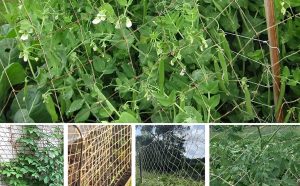- May 31, 2024
- Posted by: wellcoindustries
- Categories: Erosion Control, Jute Mesh
When it comes to growing sweet peas, using jute netting is a fantastic option that benefits both the plants and the environment. Let’s explore why jute netting is the ideal choice for supporting your sweet peas and how to use it effectively in your garden.

What is Jute Netting?
Jute netting is a natural, biodegradable material made from the fibers of the jute plant. It’s often used in gardening and landscaping because it’s eco-friendly and sustainable. Unlike plastic netting, jute decomposes over time, enriching the soil instead of polluting it.
Benefits of Using Jute Netting for Sweet Peas
- Eco-Friendly: Jute netting is 100% biodegradable, meaning it will break down naturally and won’t contribute to plastic pollution.
- Supports Plant Growth: The strong yet flexible fibers provide excellent support for climbing plants like sweet peas, allowing them to grow tall and healthy.
- Easy to Use: Jute netting is lightweight and easy to handle, making it simple to install and adjust as needed.
- Enhances Soil Quality: As jute decomposes, it adds organic matter to the soil, improving its texture and fertility.
How to Use Jute Netting for Sweet Peas
- Preparation: Before planting your sweet peas, choose a sunny spot in your garden with well-drained soil. Sweet peas thrive in full sun and need good drainage to prevent root rot.
- Installing the Netting:
- Attach the jute netting to a sturdy frame or trellis. You can use wooden stakes or metal poles to create the framework.
- Ensure the netting is taut and secure, providing a stable structure for the sweet peas to climb.
- Planting Sweet Peas:
- Plant the sweet pea seeds or seedlings at the base of the netting. Space them about 6 inches apart to give each plant enough room to grow.
- Water the plants thoroughly after planting.
- Training the Plants:
- As the sweet peas grow, gently guide their tendrils onto the jute netting. They will naturally start to climb and weave through the netting.
- Regularly check the plants and help any stragglers find their way to the netting.
Caring for Sweet Peas
Sweet peas require regular watering, especially during dry spells. Keep the soil moist but not waterlogged. Additionally, feeding the plants with a balanced fertilizer every few weeks will promote healthy growth and abundant flowering.
Harvesting Sweet Peas
Sweet peas are usually ready to harvest about 10-12 weeks after planting. Regularly picking the flowers will encourage more blooms and prolong the flowering season. Enjoy the fragrant, colorful blossoms in your home, or share them with friends and family.
Conclusion
Using jute netting for sweet peas is an excellent choice for gardeners who care about the environment and want to support the healthy growth of their plants. This natural, biodegradable material provides strong support, is easy to use, and benefits the soil as it decomposes. Give your sweet peas the best start by choosing jute netting for your garden.
By incorporating jute netting, you can enjoy a beautiful, sustainable garden that thrives season after season.
